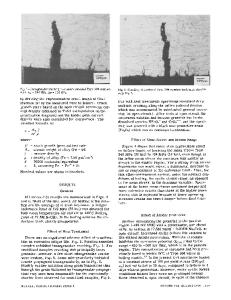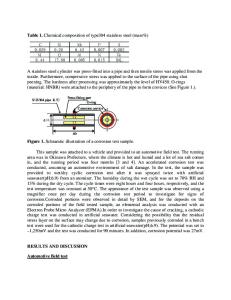Elevated-temperature low-cycle fatigue behavior of different heats of type 304 stainless steel
- PDF / 3,408,241 Bytes
- 10 Pages / 612 x 792 pts (letter) Page_size
- 35 Downloads / 307 Views
AND
S. MAJUMDAR
The low-cycle fatigue resuRs of three heats of Type 304 stainless steel have been obtained at 593~ under selected cyclic-loading conditions. The results are compared with those generated for a reference heat of steel for which extensive low-cycle fatigue data are available. Observation of the m i c r o s t r u c t u r e s of specimens in the pretest condition after a given heat treatment and examination of fatigue fracture surfaces were conducted by means of optical and scanning electron microscopy and X - r a y analysis. The three heats of stainless steel, which exhibit different m i c r o s t r u c t u r a l features, show approximately the same continuous-cycling low-cycle fatigue behavior as that of the r e ference heat. However, the three materials show improved fatigue strength during tensile hold-time conditions where significant creep occurs. The fatigue properties determined in the present study for the different heats of steel are consistent with the observed mic r o s t r u c t u r a l features. Finally, the creep-fatigne properties of the heats as well as the m i c r o s t r u c t u r a l observations a r e discussed in t e r m s of a d a m a g e - r a t e approach recently developed by the authors.
F OR the past few years, Argonne National Laboratory (ANL) has been conducting a p r o g r a m to obtain high-temperature, low-cycle creep-fatigue data on Types 304 and 316 austenitic stainless steel. These materials are of considerable interest for liquidmetal f a s t - b r e e d e r r e a c t o r (LMFBR) structural component design. The majority of the elevated-temperature low-cycle fatigue tests, however, have been p e r formed on material obtained from a single heat of Type 304 stainless steel (9T2796),* which was produced *For convemence, only the last three digits of the heat number will be used to identify the heat.
as a reference heat for all LMFBR test p r o g r a m s . One of the areas of concern is the effect of heat-toheat variations on the creep-fatigue behavior of Type 304 stainless steel. Many of the heats of steel produced meet the required ASTM specifications insofar as chemical composition is concerned; however, v a r i a tions in high-temperature creep-fatigue properties can occur depending upon the thermomechanical treatment, small chemical composition variations, and mic r o s t r u c t u r a l variables such as grain size and distribution and morphology of second phases. Experimental work related to heat-to-heat variations in the creepfatigue behavior of five heats of Type 304 stainless steel at 593~ has been reported by Brinkman and Korth. l They showed that the fatigue behavior of the five heats was similar under continuous fully r e v e r s e d strain-controlled cycling conditions. In the same investigation, under tensile hold-time conditions, four of the heats (55697, 600414, 300380, and 9T2796) exhibited approximately similar fatigue behavior, but the fifth heat (8043813) showed better fatigue strength,
P. S. MAIYA is Metallurgist and S. MAJUMDAR is Assistant M
Data Loading...











